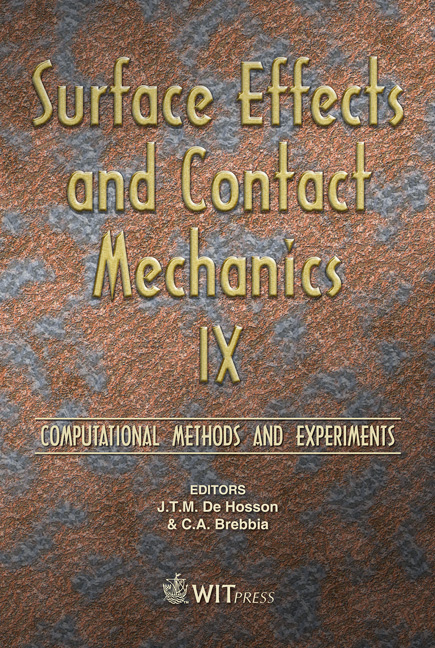The Influence Of The Spraying Angle On Properties Of Thermally Sprayed HVOF Cermet Coatings
Price
Free (open access)
Transaction
Volume
62
Pages
11
Page Range
59 - 69
Published
2009
Size
2151 kb
Paper DOI
10.2495/SECM090061
Copyright
WIT Press
Author(s)
Š. Houdková, F. Zahálka & M. Kašparová
Abstract
The tribological properties of the surfaces of parts, namely their wear resistance and friction properties, are in many cases decisive for their proper function. To improve surface properties, it is possible to create hard, wear resistant coatings by thermal spray technologies. Using these versatile coatings it is possible to increase the lifetime, reliability and safety of parts. For proper function of the surface treatment it is necessary to find and keep the optimal condition and parameters during preparation, deposition and further processing of the sprayed part. The spraying angle is one of the deposition parameters that influence the quality of thermally sprayed coatings. According to the theory, with decreasing spraying angle the process deposition efficiency decreases, whereas the porosity of coatings increases, being a cause of aggravated microstructure and mechanical properties. In this paper, the microstructure together with the basic mechanical properties and wear of WC-Co and Cr3C2-NiCr HVOF sprayed coatings were investigated in dependence of the spraying angle. For each coating, the marginal spraying angle that can be used without a significant decrease of the coating’s quality was identified. With respect to the change in coating properties as well as to process deposition efficiency, the maximum 30° diversion from a normal spray direction is recommended in the case of WC-Co and 15° diversion in the case of Cr3C2-NiCr. Keywords: thermal spraying, coating, HVOF, spraying angle, cermet, WC-Co, Cr3C2-NiCr.
Keywords
thermal spraying, coating, HVOF, spraying angle, cermet, WC-Co,Cr3C2-NiCr





